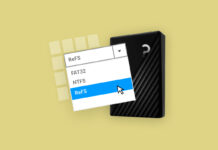 It’s natural to panic when you’re unable to log in to your user profile, or you accidentally delete your user data. But, you can undo this and recover the deleted user profile. How? By following the instructions in the guide below.
It’s natural to panic when you’re unable to log in to your user profile, or you accidentally delete your user data. But, you can undo this and recover the deleted user profile. How? By following the instructions in the guide below.
Table of Contents
What Causes a User Profile to Disappear
All the files stored in library folders like Desktop, Documents, Pictures, Downloads, Music, and Videos, are linked to your user profile. Losing the user profile means losing access to all these folders. Apps and games, whether native or third-party, store your personal settings, and preferences, and save games in your user profile (usually in the AppData folder).
Various factors can lead to a deleted user profile. Some common ones include:
| Factor | Description |
| 💥 Accidental Deletion | It’s easy to accidentally delete useful files when you want to clean up the C: drive. This could be the entire user folder, or files from the user library folders. It’s also possible that you intentionally deleted a user profile only to realize that you need access to it later. |
| 🦠 Malware | Computer viruses can wreak havoc on your computer. This includes the deletion of your user profile. Malware can also cause widespread data corruption of your disk, or lock you out of your data entirely (ransomware). |
| 💿 Bad Sectors | Areas that can’t be read from or written to on your hard drive, are called bad sectors. While bad sectors will develop over time, frequent power cuts, malware, and improper ejection can all cause them to develop at a much faster rate. Accumulation of bad sectors causes data loss, and can result in a missing user profile. |
Even after losing access to all your user data, it’s rare that you’ll be unable to log in to the user profile at all. If you’re unable to sign in to the user profile, a Registry error is likely the culprit.
💡 Good to know: Although the terms, “user account” and “user profile” are used interchangeably, there is a slight difference between the terms. A user account (such as Administrator, Standard and Managed) determines the level of access you have to folders, certain settings, and the changes you can make to the PC. On the other hand, a user profile stores your personal preferences (such as the desktop wallpaper and other personalization settings), and personal files.
How to Restore a Deleted/Lost User Profile in Windows
The method you use to recover the deleted user profile will depend on whether the actual user account was deleted, or you simply deleted some files from the user folder. If you used the Control Panel or User Account Settings to delete the profile, you cannot restore the profile. However, you can get back the user data associated with that profile using data recovery software.
If you deleted the entire user account folder, you can opt to use System Restore, Recycle Bin, or rebuild the user profile in Windows 10/11 using the Registry Editor.
Method 1: Check if You’re Logged in to the Correct User Account
Before you commit to more elaborate fixes, it’s a good idea to double-check whether you’re actually signed in to the correct user account. If you have multiple user accounts, it’s possible to log in to the incorrect one, in which case, you won’t be able to find the files associated with other accounts.
Here’s how you can sign out and double-check that you’re using the correct user account:
- Click on the Start button.
- Click on the user profile and choose Sign out.
- Log In to the correct user account.
Sometimes, Windows logs you in with a temporary user profile when the sign-in to an actual one fails. A temporary file is no substitute for a real profile, as all your settings, data, and other files created during the session are deleted as soon as you sign out.
Method 2: Check the Recycle Bin
If you right-clicked the user folder and clicked Delete or simply selected it and pressed the Delete key on your keyboard, the folder can be restored from the Recycle Bin. This method won’t work if you used the Shift + Delete shortcut to delete the folder.
Here’s how you can undelete the user profile using the Recycle Bin:
- Double-click on the Recycle Bin icon on the Desktop.
- Look for the user profile folder, right-click on it, and select Restore.
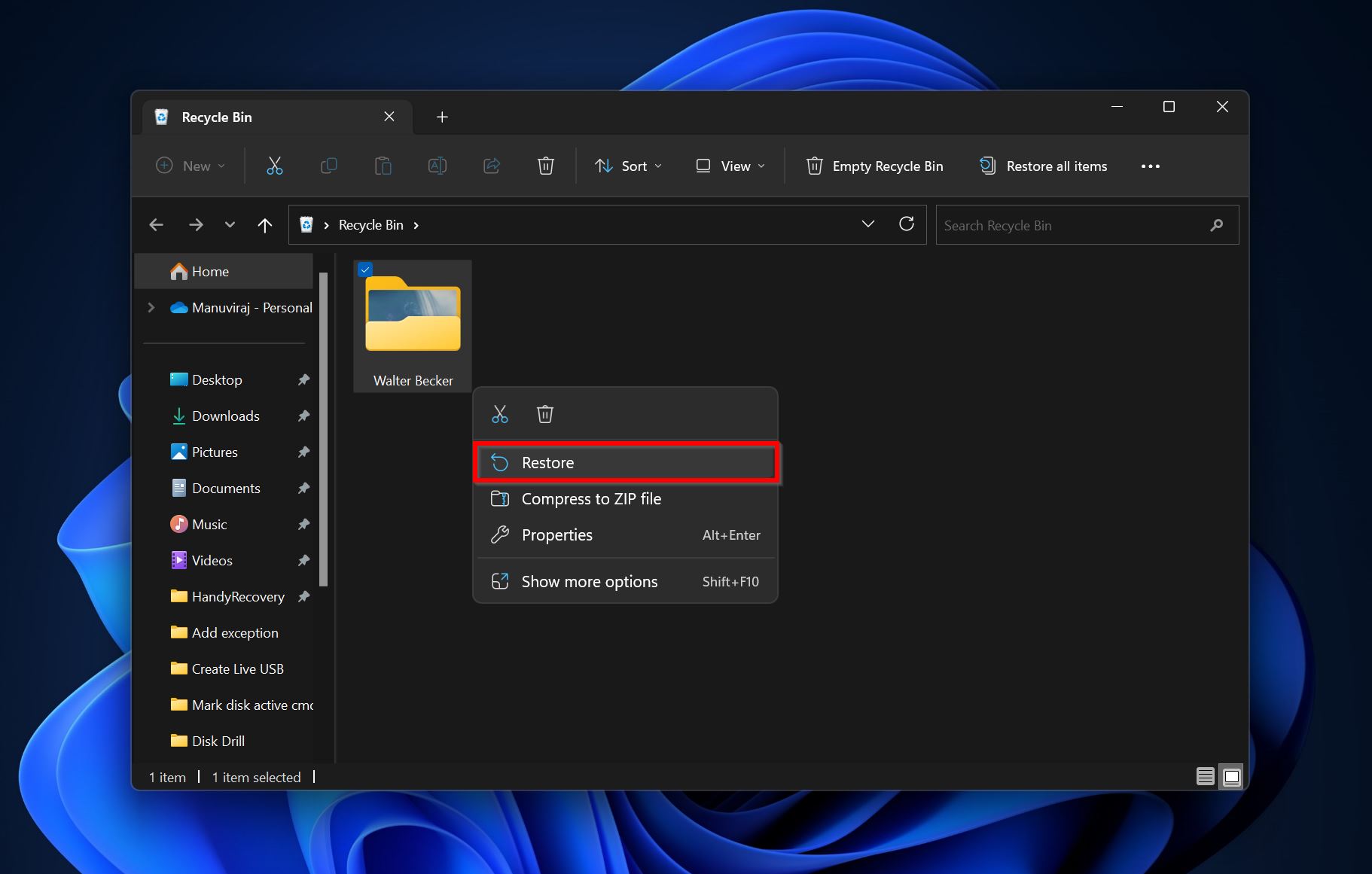
- The user folder will be moved back to its original location.
Method 3: Manually Restore User Profile via the Registry Editor
Modifying the Windows Registry is a complicated process and can backfire if you take a misstep. Proceed with caution if you opt to use this method, and be sure to follow all the steps carefully.
For easier comprehension, we’ve divided this step into two parts:
Part 1: Find the Security Identifier (SID) For Your Profile
The SID is unique to each user account and you’ll use it to find the right profile when editing the Windows Registry. Here’s how you can find the SID for your profile:
- Type “cmd” in Windows Search (Windows Key + S). Right-click on Command Prompt > Run as Administrator from the search results.
- Type net user administrator /active:yes and press Enter. This command activates the super administrator account, which you’ll need to edit the Registry.
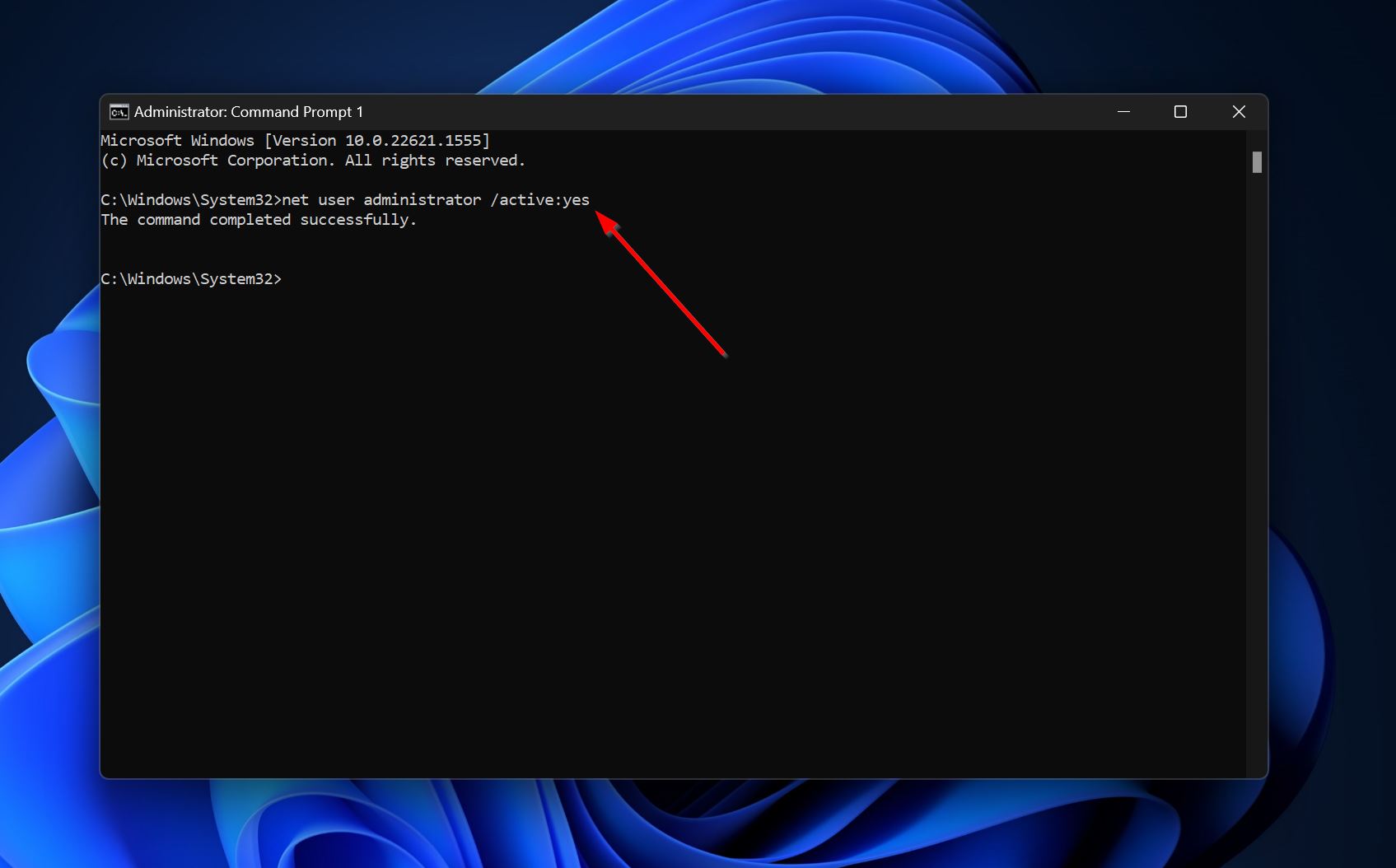
- Type whoami /user and press Enter.
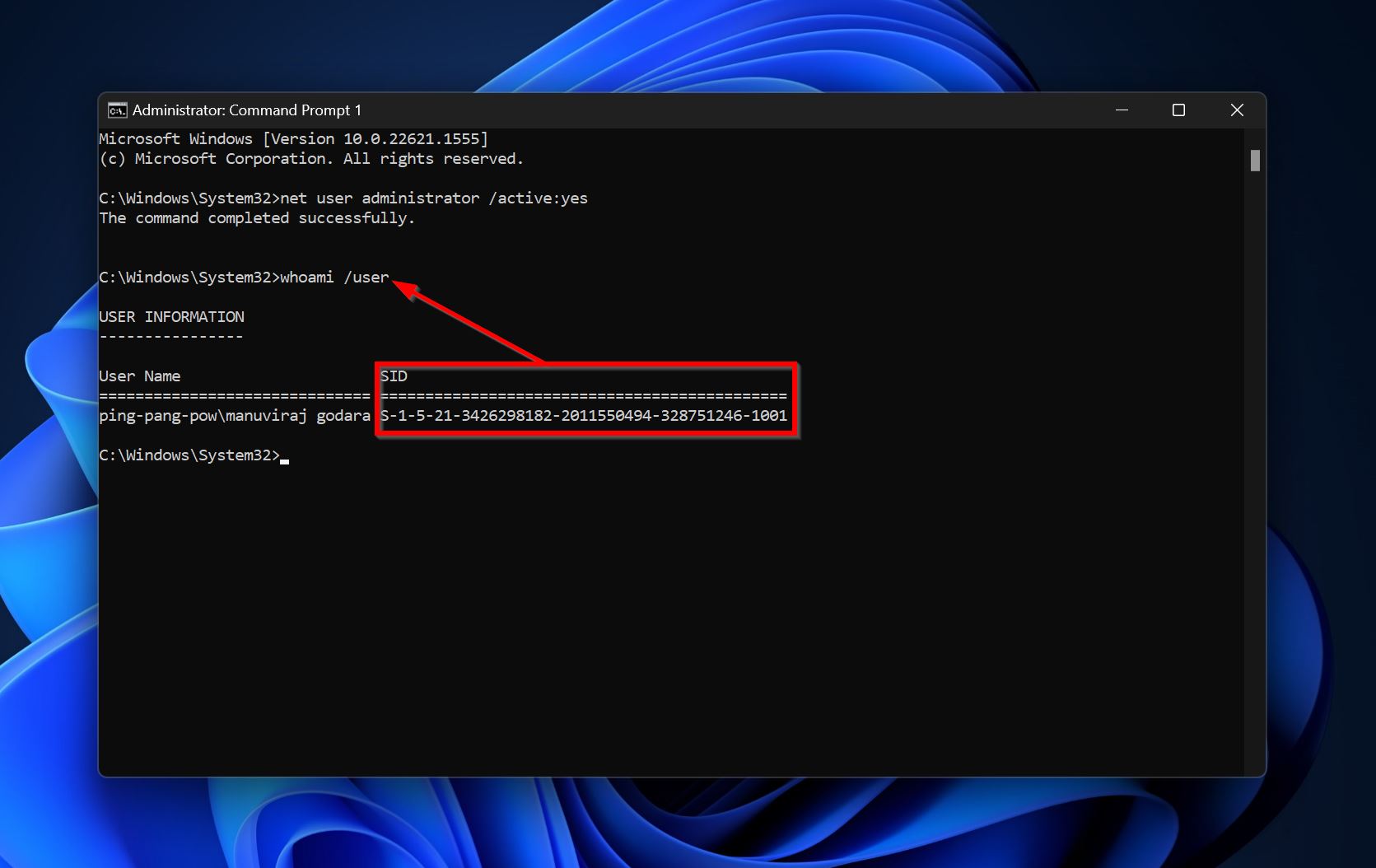
- You’ll see the SID of your user account. Note it down because you’ll need it for the next step.
Part 2: Edit the Registry and Recreate the Windows User Profile
Before proceeding further, you need to switch to the Administrator account you enabled using the “net user administrator /active:yes” command. To do this, sign out of the current user account, and select the Administrator account on the sign-in screen. Once you’re logged in to the Administrator account, follow these steps:
- Press Windows Key + R to open the Run app, type regedit in the text box and press Enter. This will launch the Registry Editor.
- Navigate to the following location in the Registry Editor: HKEY_LOCAL_MACHINE\SOFTWARE\Microsoft\Windows NT\CurrentVersion\ProfileList.
- Under the ProfileList subfolder, you’ll see various SIDs. Look for the SID that you noted down earlier. Here, you’ll encounter ONE of the following cases:
- Case 1: The SID will be listed twice, with one of them consisting of a .BAK extension.
- Case 2: The SID will be listed only once, with a .BAK extension.
- Case 3: The SID will be listed once, without a .BAK extension.
The steps will be similar in all cases, with some minor differences:
For Case 1
- Right-click on the folder with the matching SID, without the .BAK extension.
- Click on Delete.

- Choose Yes in the confirmation prompt.
- Now, right-click on the matching SID folder with the .BAK extension and choose Rename.

- Remove the .BAK extension and press Enter.
For Case 2
- Right-click on the SID folder with the .BAK extension and click Rename.
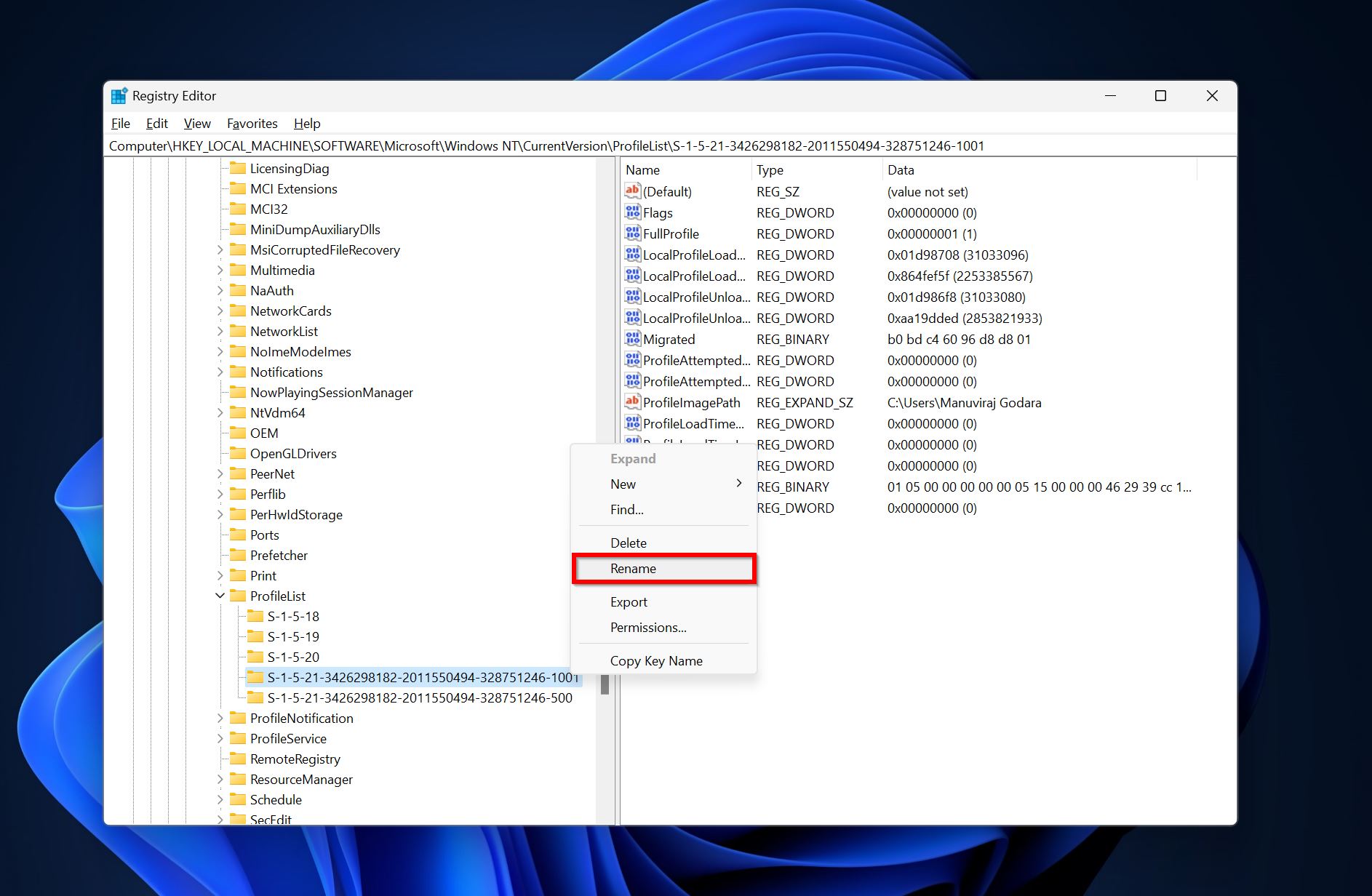
- Remove the .BAK extension from it and press Enter.
For Case 3
Here, you don’t have to rename or delete anything, since the SID is already listed without the .BAK extension.
For Cases 1, 2, and 3
In all cases, there’s a slight chance that the ProfileImagePath entry is incorrect. It’s recommended you check and correct this. Do this after you’ve taken the relevant renaming steps for your particular case.
- Click on the folder with the matching SID.
- Double-click on the ProfileImagePath entry in the right pane.
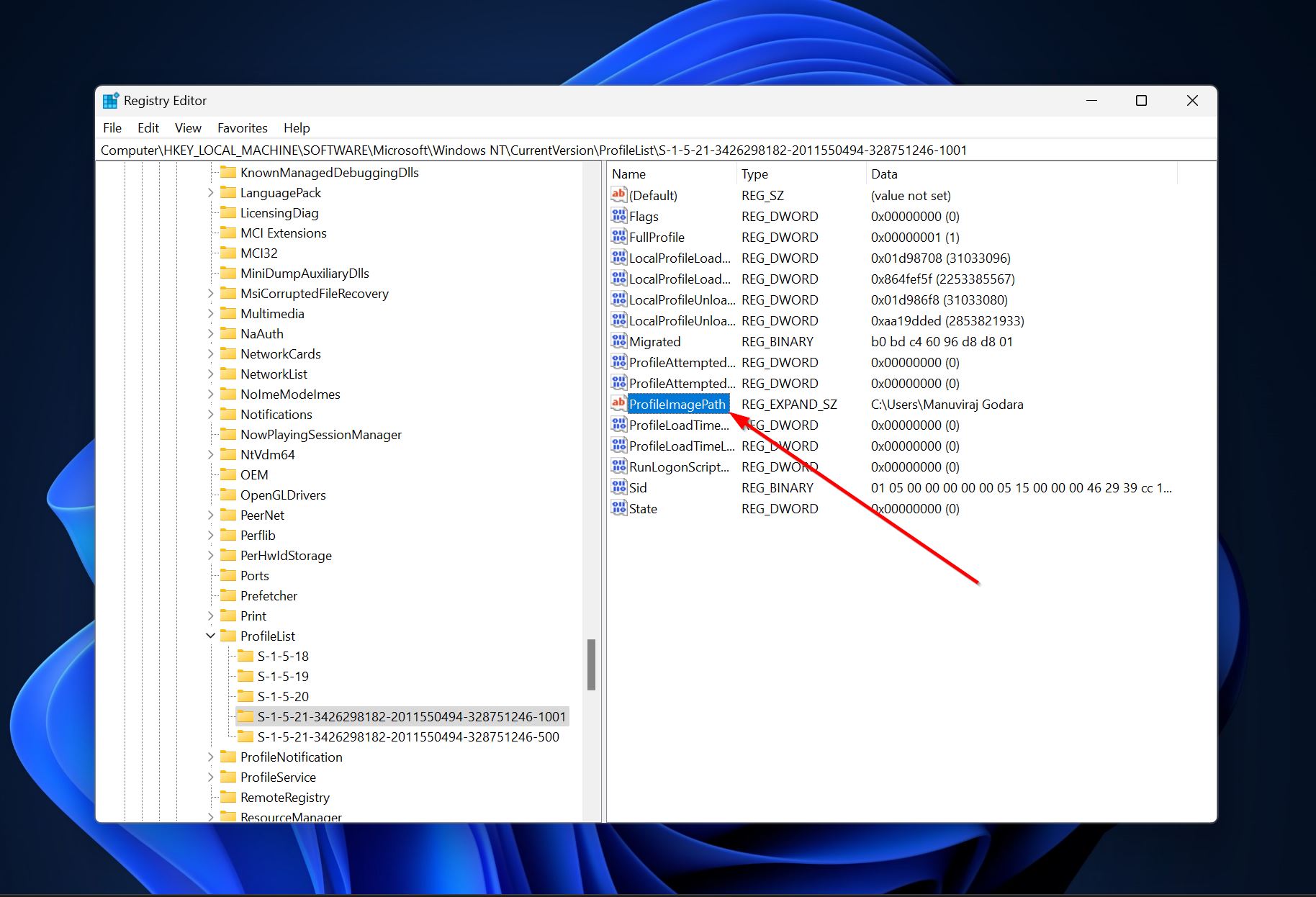
- The Value data field should contain the path to the user profile. If it doesn’t, or the path is incorrect, change it to the folder path of the user profile and click OK. For example, C:\Users\ProfileName.

- If you had to change the Value data for ProfileImagePath, you need to perform an additional step. Double-click on the State entry in the right pane.
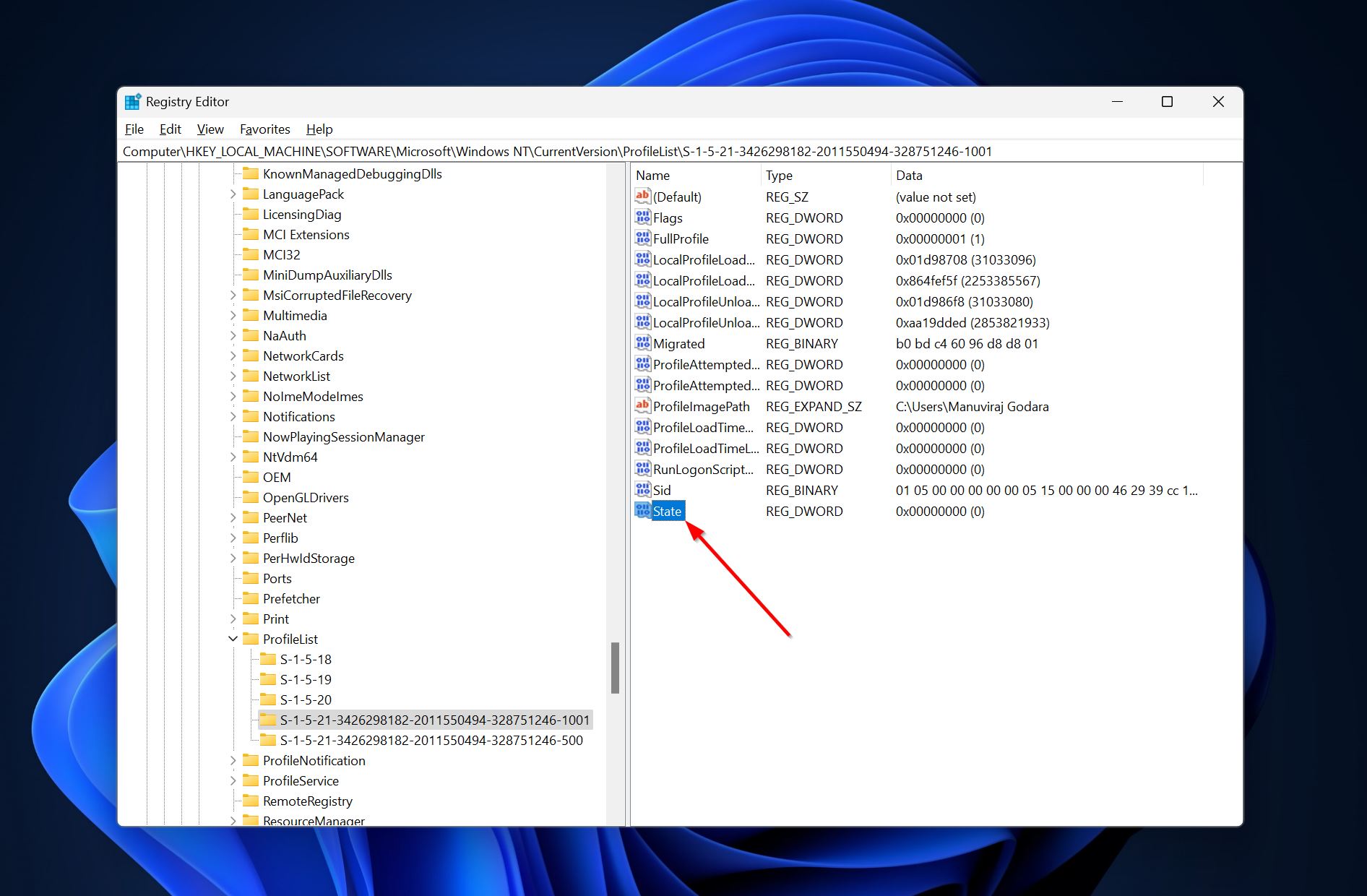
- Change the Value data to 0. Click OK.
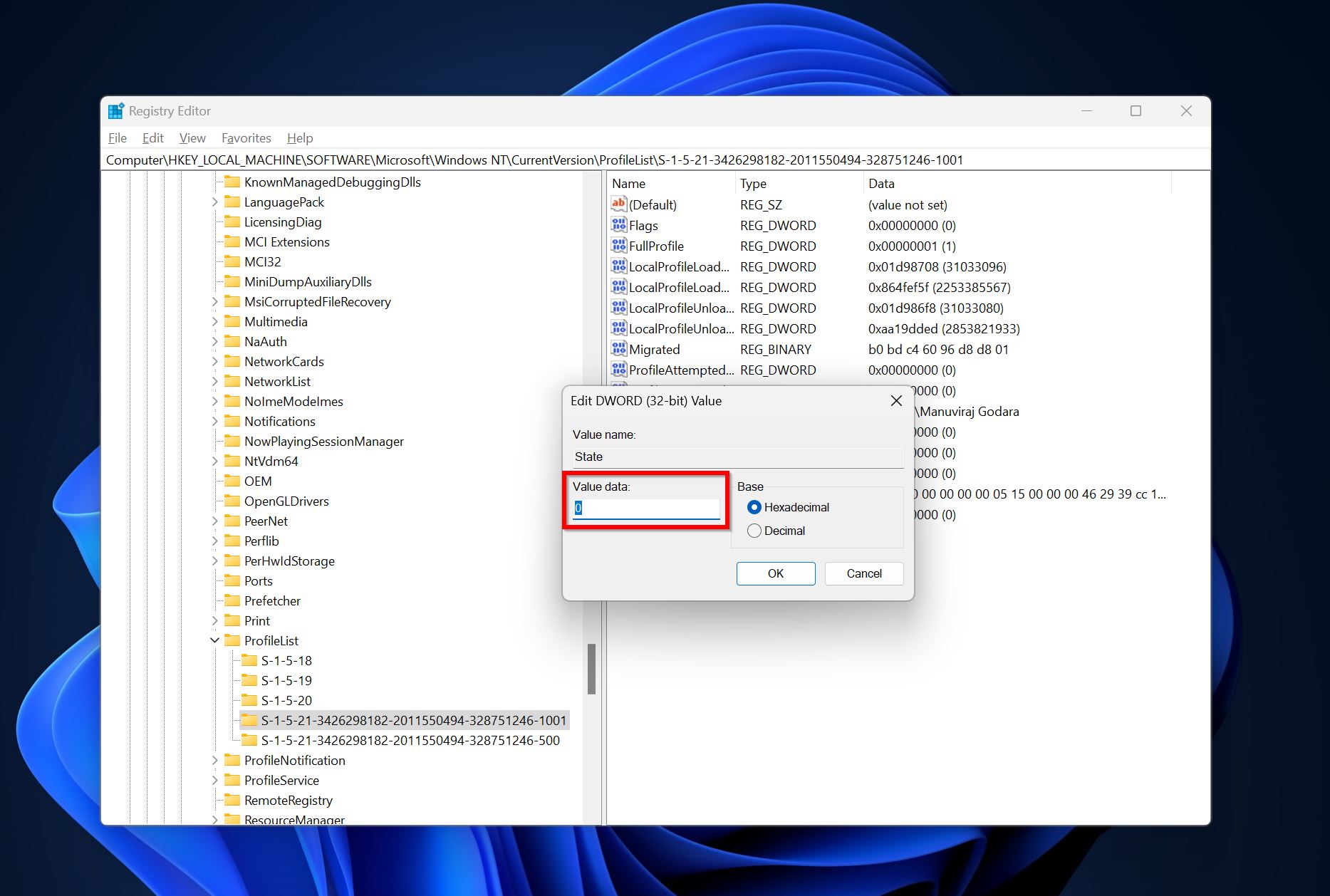
Once you’re done performing the relevant actions, depending on your case, reboot your PC. You should be able to log in to your user profile and access your user data.
Method 4: Restore the User Profile using System Restore
System Restore lets you revert your computer to an earlier state. If it was set up properly, it’s likely Windows created a Restore Point before your user profile was deleted. It won’t recover your personal files, but it will restore the system settings back to how they were when the Restore Point was created.
This method is quite useful if a third-party app tampered with your settings, or you unknowingly misconfigured Windows.
Here’s how to use System Restore and regain access to your user profile:
- Search for “system restore” in Windows Search (Windows Key + S). Click on Create a restore point
- Click on the System Restore option.
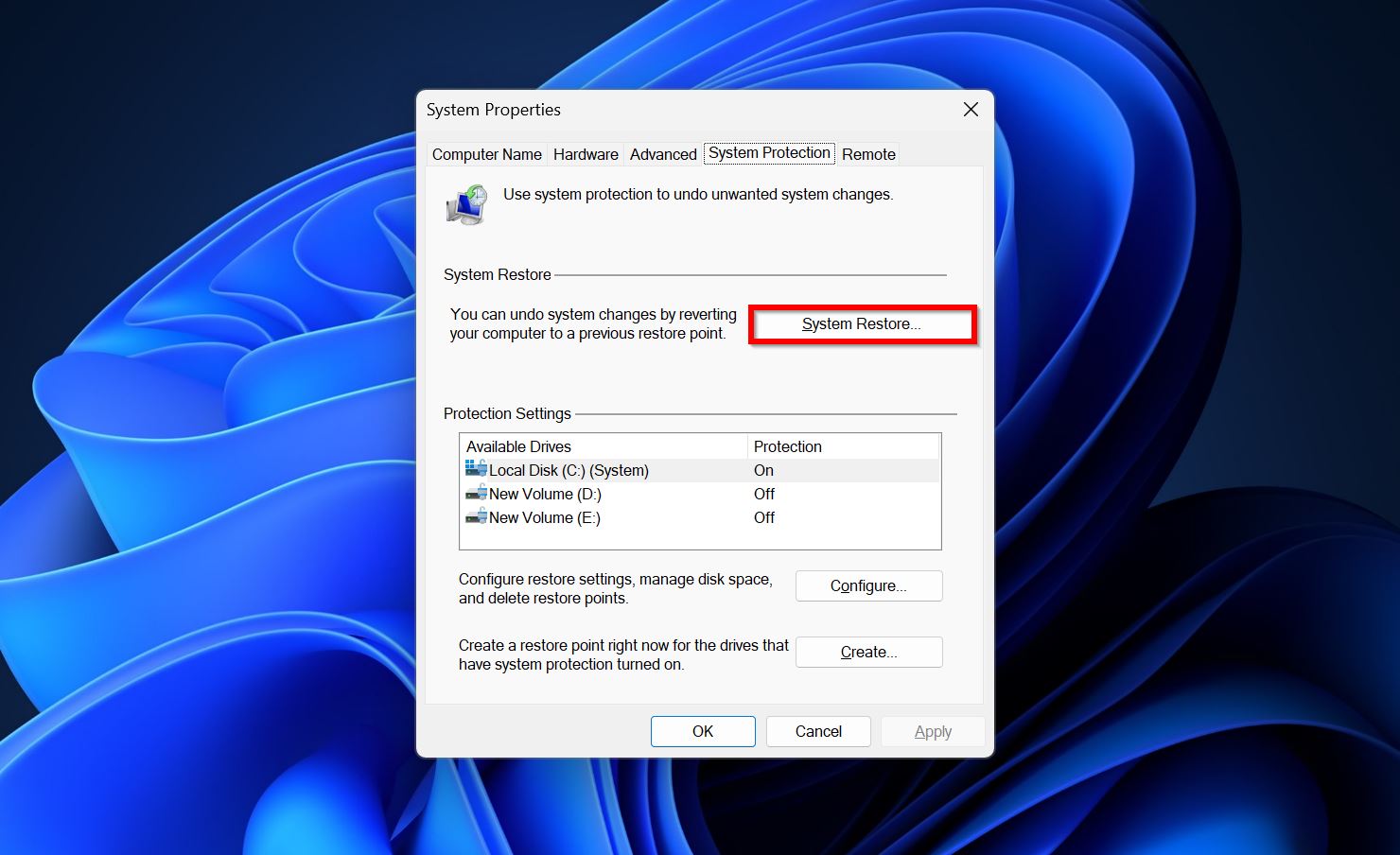
- Click Next on the System Restore wizard welcome screen.
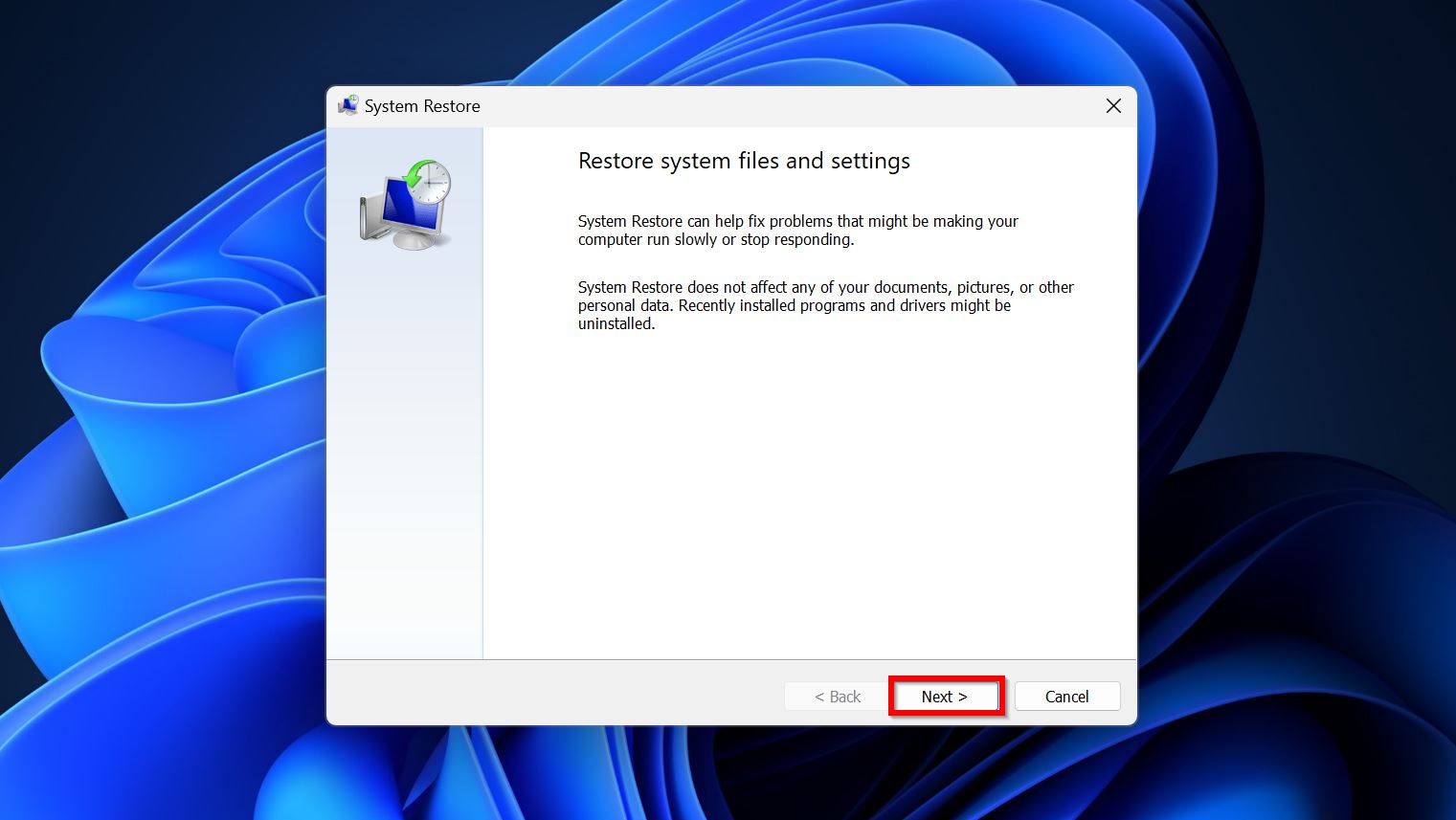
- Select a restore point and click Next.
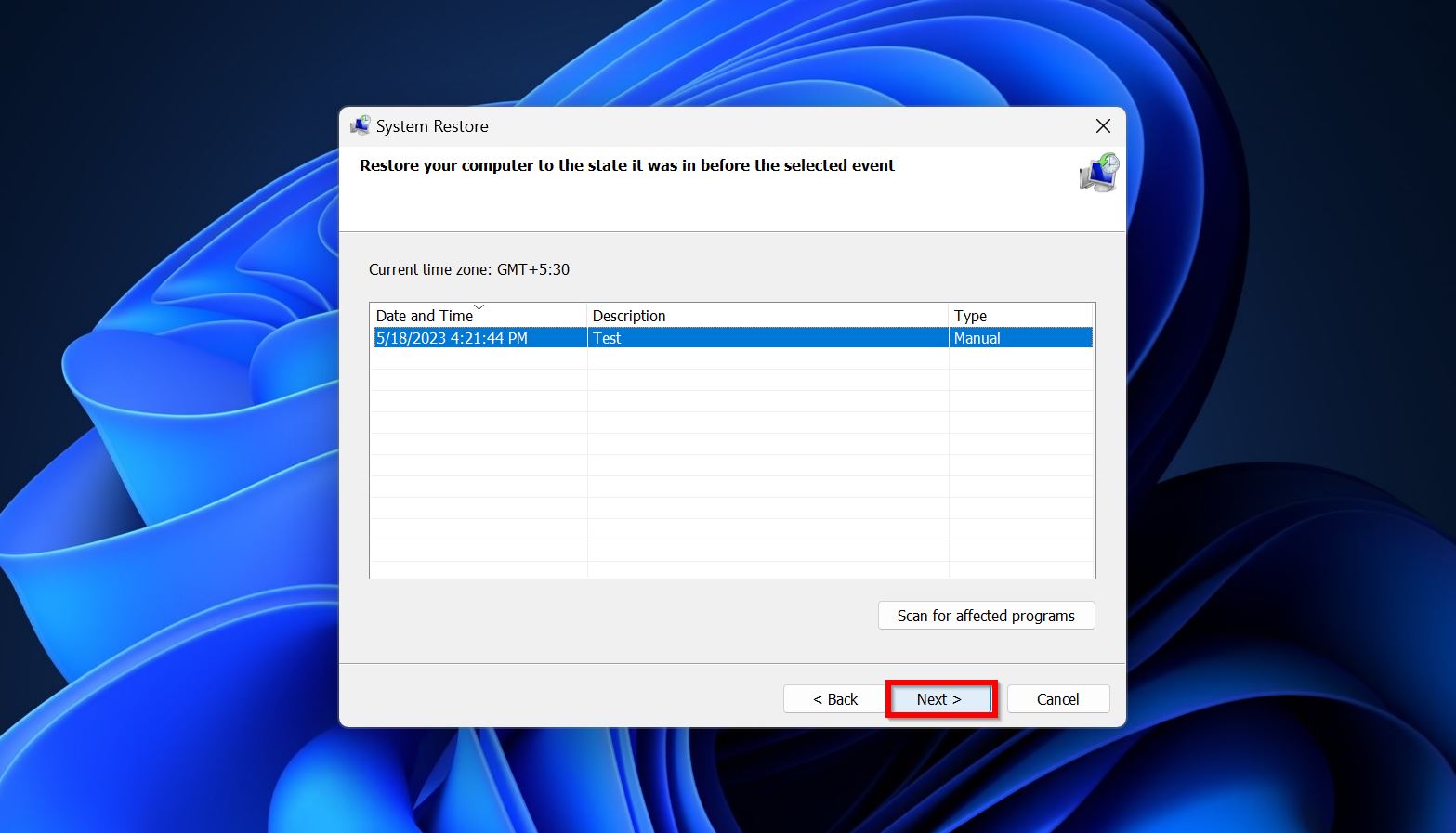
- Click on Finish to begin the System Restore process.
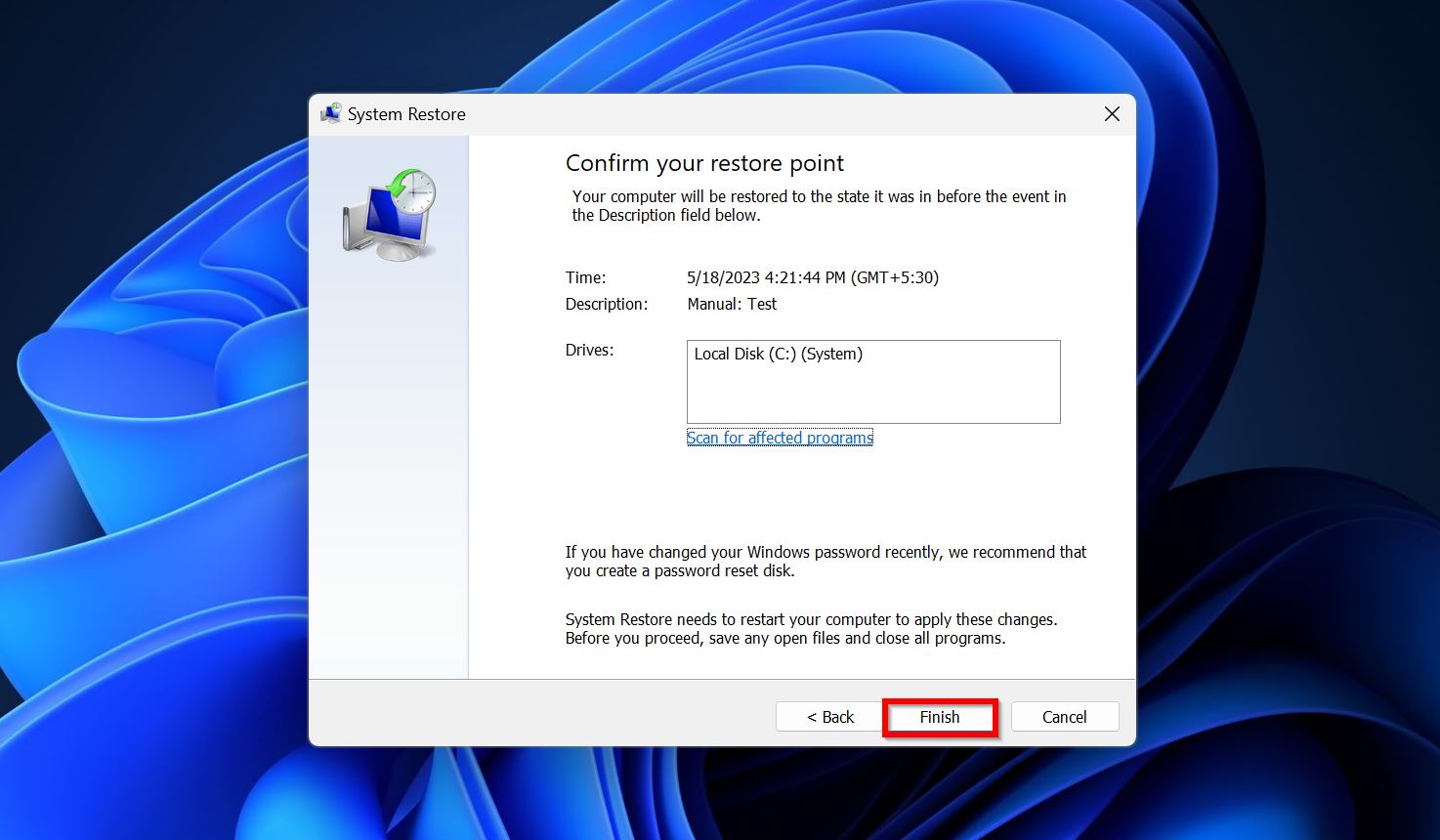
Method 5: Recover Lost Data Into the Current User Profile
If you don’t want to go through the trouble of recreating the user profile, but still want to get back your personal data, third-party data recovery software is your best friend. If you’re still able to log in to the user profile, you can simply recover your data and copy it to the library folders. If the profile itself is corrupt, use the super admin account you created before to create a new user profile in Windows.
Note: Data recovery from SSDs is substantially more difficult than HDDs. This is because SSDs utilize the TRIM feature, which regularly “cleans” up deleted data and makes it impossible to recover.
It’s important to pick the right data recovery program, as not all data recovery apps are created equal. We decided to go with Disk Drill, mainly because of its simplicity and proven data recovery record. It recognizes over 400 file formats and works with all major file systems, which eliminates the need to double-check for compatibility. As a Windows user, you can recover up to 500 MB of files without spending a penny.
To recover your user files, follow these steps:
- Download and install Disk Drill.
- Open Disk Drill, expand the drive, and select the C: partition. Click on Search for lost data.
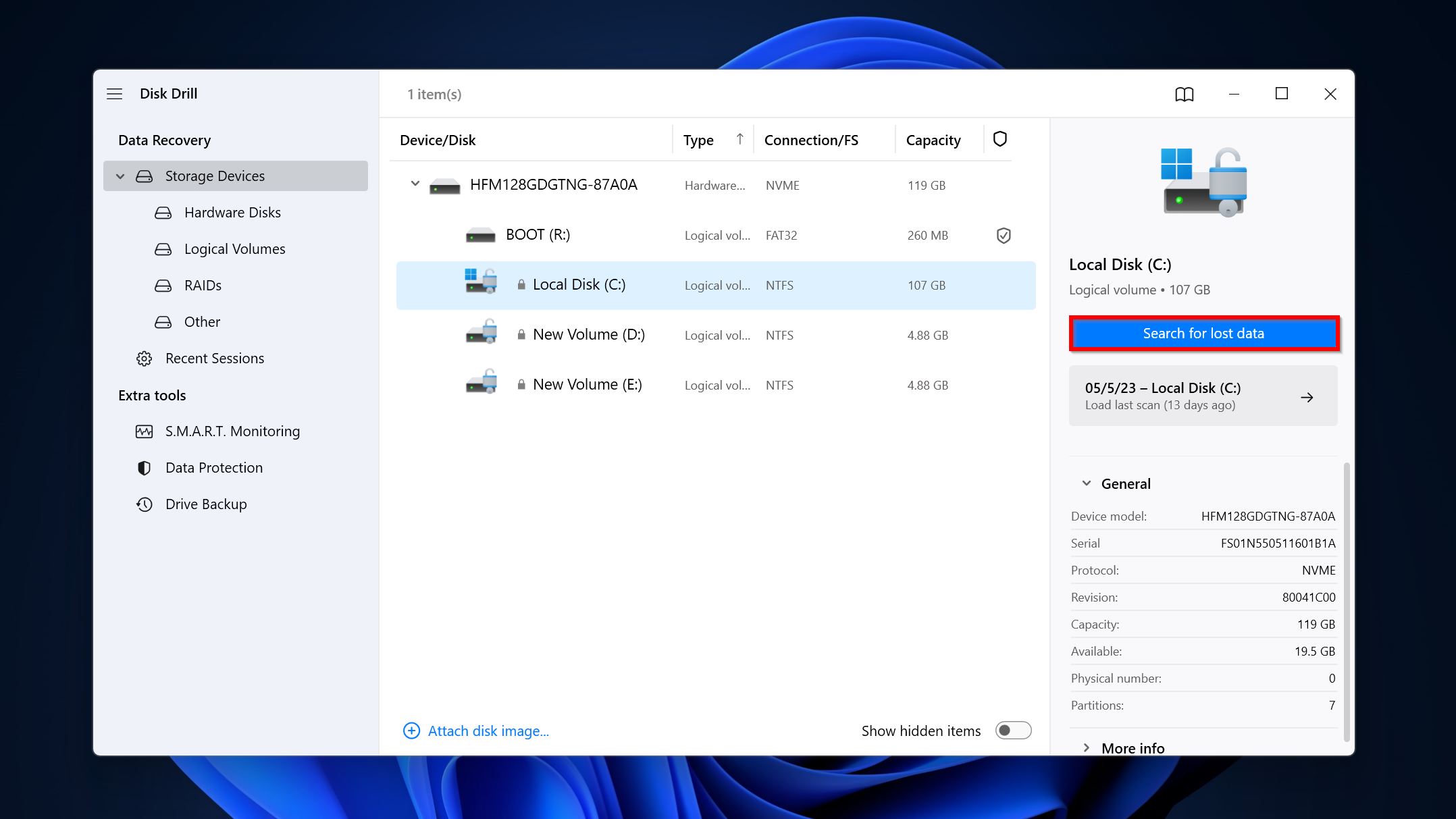
- Click on Review found items or filter the results by directly clicking on the relevant file type you wish to recover (Pictures, Video, Audio, Documents, Archives, and Other).
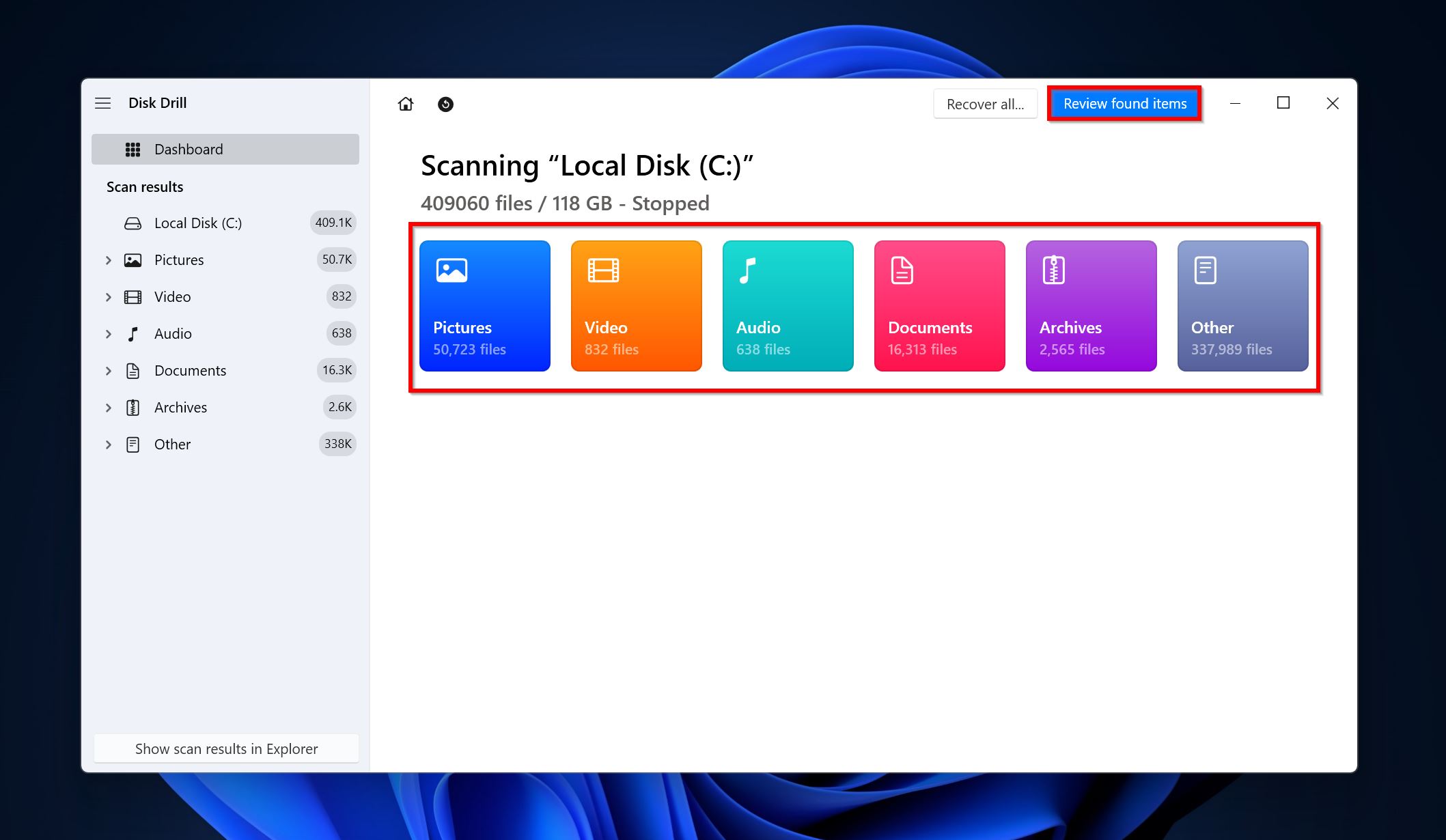
- Expand the Lost or deleted and Reconstructed sections to view files that were deleted.

- Use the checkboxes to select the files you want to recover. Disk Drill displays a preview of the selected file. You can manually preview a file by clicking the eye icon next to the filename. Click on Recover once you’re done with the selection.

- Choose a recovery destination. It’s recommended you recover the files to a different drive. Click Next.

- Disk Drill will recover your files.
Conclusion
Losing a user profile with its data may seem scary, but it’s not that difficult to undo. Even if you’re unable to regain access to the profile, you can always restore your user data from it. However, this should serve as a reminder for you to religiously follow a backup schedule. Try to have multiple backups–local, and on the cloud.



